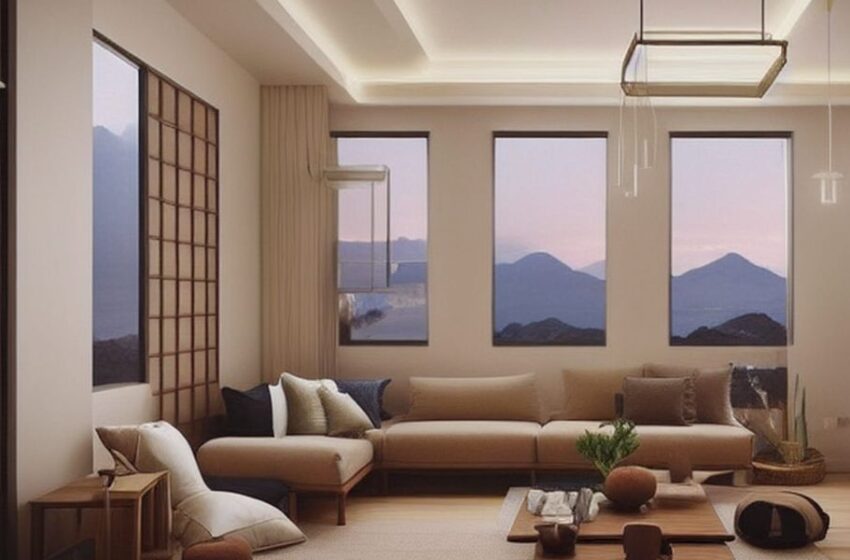
AI-Driven Interiors: Crafting Tomorrow’s Living Spaces
In the dynamic landscape of interior design, a fascinating revolution is underway, fueled by the integration of Artificial Intelligence (AI) into the creative realm. This blog delves into the transformative power of AI in shaping modern interiors, bringing a seamless blend of innovation, functionality, and aesthetics.
Unveiling the AI Design Ecosystem
AI-driven interiors go beyond mere automation; they represent a sophisticated ecosystem that analyzes data, understands user preferences, and creates personalized design solutions. This intricate synergy between data and design results in spaces that resonate with the individuality of their inhabitants. In this realm, AI algorithms process vast datasets, considering factors like color psychology, spatial dynamics, and architectural styles. Drawing inspiration from reputable sources such as MIT’s Senseable City Lab and design think tanks, AI is not just automating tasks but becoming a true design collaborator.
Intelligent Spatial Planning
One of the key facets of AI-driven interiors is its prowess in spatial planning. Through advanced algorithms, AI evaluates room dimensions, traffic patterns, and natural light variations. This meticulous analysis ensures optimal furniture placement, enhancing both functionality and aesthetics. The renowned interior design expert, Sarah Williams, highlights how AI-driven spatial planning optimizes every inch of a space, creating a harmonious balance between form and function. This approach not only maximizes usability but also contributes to a more sustainable and eco-friendly design ethos.
Personalized Aesthetics
AI’s ability to analyze individual preferences and style choices elevates the concept of personalized aesthetics in interior design. By studying a user’s interaction with design elements, AI curates a bespoke palette, furniture selection, and overall ambiance. Drawing inspiration from the works of AI-driven design platforms like Morpholio Board and the collaborative efforts between designers and AI, homes now reflect a unique blend of personal taste and cutting-edge design principles.
Crafting Emotional Connections
Beyond the tangible elements, AI-driven interiors excel in crafting emotional connections within spaces. By interpreting user behavior, AI adapts and evolves the design over time, ensuring an ongoing resonance with the occupants’ emotions and needs. Citing studies from the Journal of Environmental Psychology, where AI-driven interiors positively impact occupants’ moods and well-being, the integration of emotional intelligence into design emerges as a revolutionary aspect of contemporary living spaces.
Ethical Considerations in AI Design
As AI increasingly becomes a design partner, ethical considerations gain prominence. Exploring the ethical dimensions of AI in design, incorporating insights from organizations like the Design Institute for Health, ensures a responsible and mindful approach to technology integration in interiors. Addressing concerns about privacy, data security, and the potential bias in AI algorithms becomes paramount. By staying informed and actively engaging in discussions around ethical AI practices, the design community can shape a future where technology enhances without compromising human values.
Future Trends and Innovations
What lies ahead in the realm of AI-driven interiors? Analyzing emerging trends and innovations in AI design, inspired by forward-thinking concepts from institutions like the Stanford Artificial Intelligence Lab, unveils a future where homes are not only smart but intuitive extensions of human lifestyle. From predictive design suggestions to real-time adaptation to environmental changes, the future promises a harmonious coexistence between AI and human creativity.
Final Words
In concluding this exploration of AI-driven interiors, we witness a paradigm shift in how we conceive and experience living spaces. The synergy between human intuition and AI’s analytical prowess propels design into uncharted territories, creating homes that are not just visually stunning but deeply attuned to the needs and aspirations of their inhabitants.
Commonly Asked Questions
Q1. How does AI-driven design impact traditional interior design processes?
AI augments traditional processes by automating mundane tasks, allowing designers to focus on creativity and personalization. It streamlines workflows, leading to more efficient and innovative outcomes.
Q2. Is there a risk of overreliance on AI compromising the uniqueness of designs?
AI serves as a tool for designers, enhancing their capabilities rather than replacing them. The collaboration between human intuition and AI algorithms ensures a harmonious balance, preserving the essence of unique and personalized designs.
Q3. What ethical considerations should designers keep in mind when integrating AI into interiors?
Designers must prioritize privacy, data security, and unbiased algorithms. Collaborating with organizations advocating ethical AI practices ensures a responsible and mindful approach to technology integration.
Q4. Can AI-driven interiors adapt to changing user preferences over time?
Absolutely. AI continuously learns from user interactions, evolving the design to match changing preferences and lifestyles. This adaptability ensures that living spaces remain relevant and emotionally resonant.
Q5. How can individuals stay informed about the latest trends in AI-driven interiors?
Engaging with design communities, attending conferences, and following reputable design institutions provide insights into the latest trends and innovations in AI-driven interiors.

